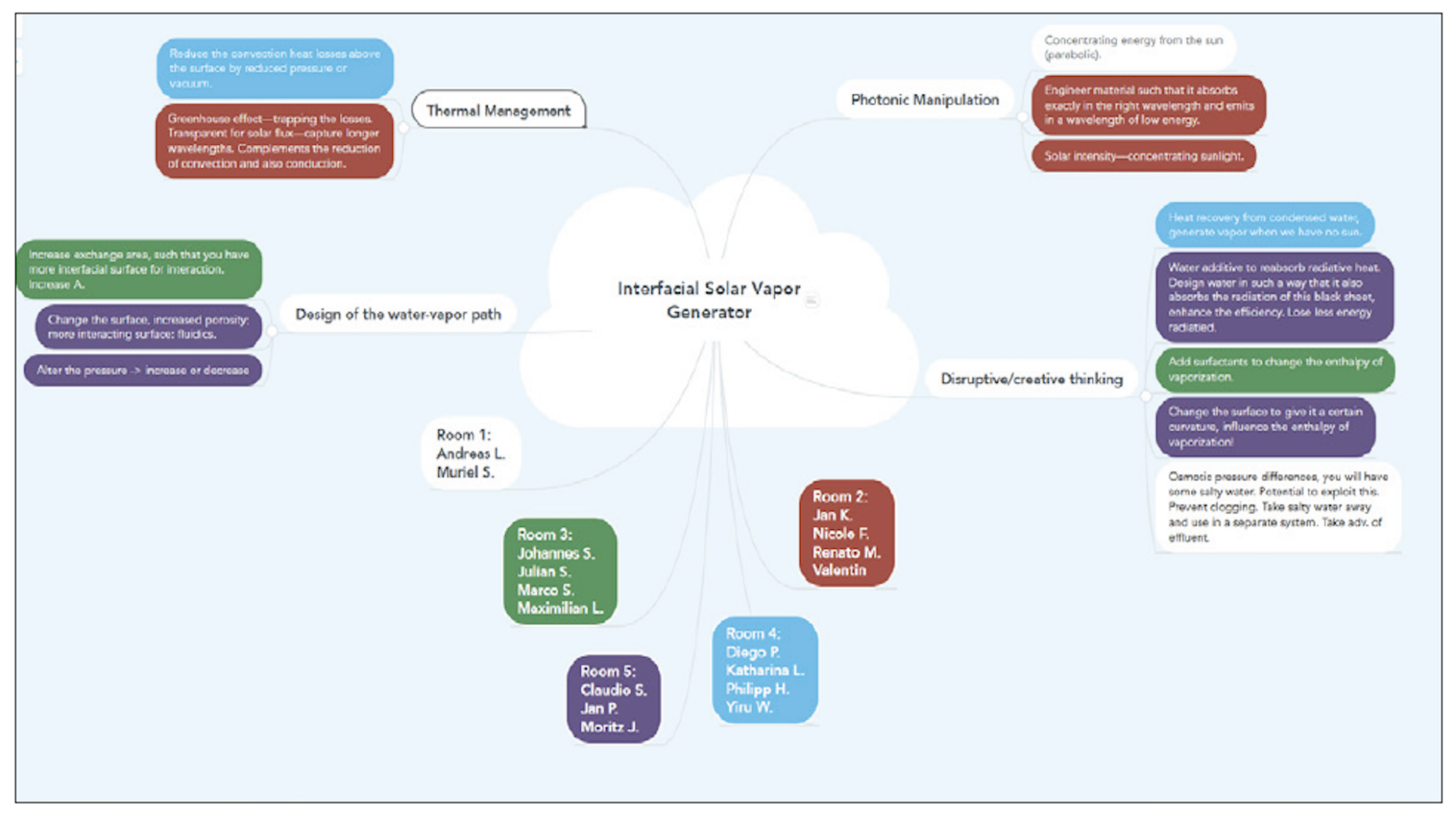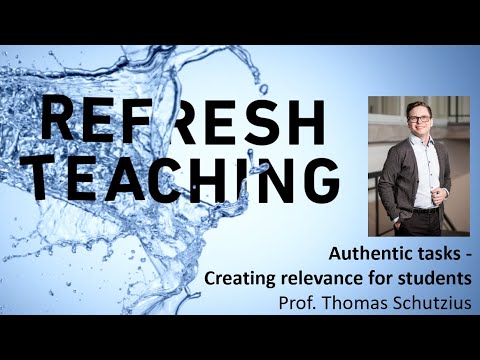Thermodynamics and Transport Phenomena in Nanotechnology
The main purpose of the course is for the students to select an existing research paper, make a poster, and present it in a “virtual” symposium with the theme “Nanotechnology and the Water-Energy Nexus” that is led by their peers.

Implementation of the course during the time of distance learning
Proportion of active teaching and passive support:
We have 10 “foundational” lectures and 10 “foundational” exercise sessions, whose purpose is to provide the motivation and necessary fundamentals for the multidisciplinary group of students to judge emerging nanotechnologies that address challenges in water and energy. There are then 4 lecture/exercise sessions for an independent group project, which we term “Core Subject”. Before each session, each group of students prepares one element (e.g., a draft of a poster, video pitch, etc.), which I give quick written feedback on. In the lecture or exercise session, the students then practice giving and receiving peer feedback with each other. In the final 2 sessions (lecture or exercise)—which is what the whole course builds up to—we have a student-led symposium with the theme: “Nanotechnology and the Water-Energy Nexus”. For the “Foundational” sessions, the proportion of active teaching is 50% to 75%, and includes traditional 20 to 30 min lectures followed by breakout sessions and collecting feedback in plenary. In the “Core Subject” sessions, the proportion of active teaching on my part is 25%—primarily led by the students. In these sessions I typically give a short 5 min presentation to explain the task, and then the students pair up with another group and practice giving each other peer feedback (40 min). We then spend the next 45 min collecting feedback on the most important thing they learned in the breakout session.
Feedback:
Before each of the Core Subject sessions, each group of students (3 to 4 students per group) creates and uploads online one element of their poster (e.g., outline, poster draft, pre-recorded video pitch, critique of the research paper), and I provide quick feedback based on my first impressions (similar to what you would experience in an actual poster session in a conference). In the following session, the students are paired up with another group (never the same one) where they present their element and receive feedback. We have four “feedback” sessions like this, which are done either during a lecture or exercise session. In the last session, the students do a dry run of the actual virtual symposium.
Active participation of the students:
The active participation of students grows with time—as they become comfortable with each other—and as the course demands it. During the “foundational” part of the course, the students actively participate in breakout rooms and contributions in plenary. During the “core subject”, the students are actively participating in presenting their poster or video pitches, and then giving and receiving peer feedback. By the end, the students are fully running an online virtual symposium, where my role is only to ask questions during the Q&A session of the symposium. Virtual symposium: The virtual symposium takes place over two days. Each group that presents is paired up with another group who introduces and moderates the discussion. Each person in the moderating group has a role to play. There is a presenter (plays the pre-recorded video pitch), questioner (ensures each person has been asked a question), recorder (monitors the Zoom chat window for questions), and a timer (keeps us on time). First, the presenter plays the 3 minute prerecorded video pitch; then the presenting group takes 5 minutes to share their screen and explain their research poster; afterwards, we have 17 minutes of moderated question and answers.
Communication: We communicate lecturer to student (traditional lecture); student-to-student (breakout sessions); and student-to-lecturer (plenary discussion).
Synchronous and asynchronous elements of teaching:
The entire course was/is taught “synchronously” (live). All foundational lectures and exercises are recorded and put online. All of the core subject sessions—where the students provide feedback—is by its nature taught synchronous. Asynchronous elements of my course includes the student-led learning of creating a research poster and video pitch.
Student support:
The students receive regular feedback from me on their content for the symposium. Assessment: This was done with a session exam that consisted of 75% written exam and 25% which was the poster presentation in the symposium.

Course description

Overall concept of the course before the pandemic - during - after
Before the pandemic, I taught a course called “Thermodynamics and Energy Conversion in Microand Nanoscale Technologies”. I significantly revised this course for Spring 2020, gave it a new title, although some elements were the same. The course is primarily intended for master’s and PhD students as well as bachelor students who are focused on energy challenges. I begin by explaining what the grand challenges at the water-energy nexus are and emerging material and process solutions to address them. Inspired by this, we then dig into the fundamentals for how these materials/processes are designed (Weeks 1 to 10). During this time, the students also form a group (three to four students), select a research article consistent with the theme of the course (Nanotechnology and the Water Energy Nexus). During week 10, they make a draft of their poster and receive feedback from me and also from their peers. During week 11 they make a video pitch and receive feedback from me and their peers. In the same week, they also critique their poster and receive feedback from their peers on it. With this feedback and practice presenting and giving as well as receiving peer feedback, they are then able to run a two-day symposium.
Each presenting group is paired with a moderating group that plays the pre-recorded video pitch, monitors the time, and moderates the question and answer session.
I was very concerned that the “virtual” student symposium would be poorly attended except when it was their turn to present. So, I decided that the students should play a role in moderating it. To do this effectively, I needed them to see how I gave feedback (verbal and written) and for them to practice with each other for several lecture and exercise sessions. This shift towards increased interactivity (peer feedback) at the expense of more traditional lectures was something that I made during the pandemic to save the end-of-semester symposium.